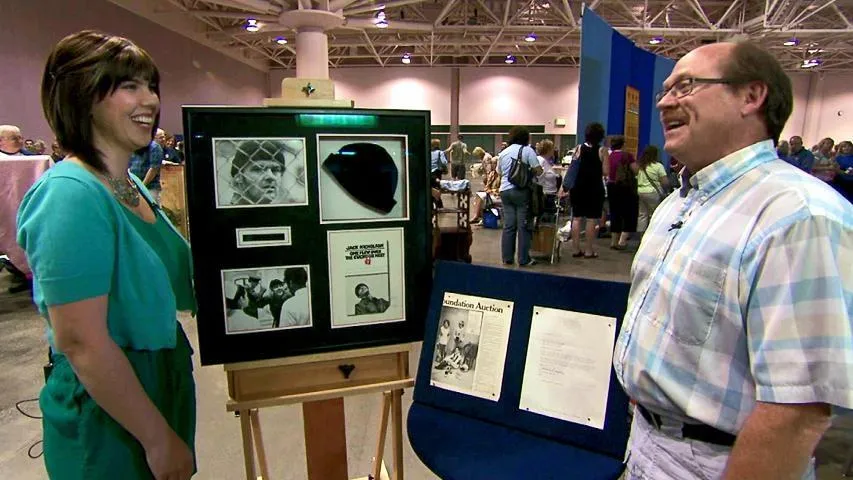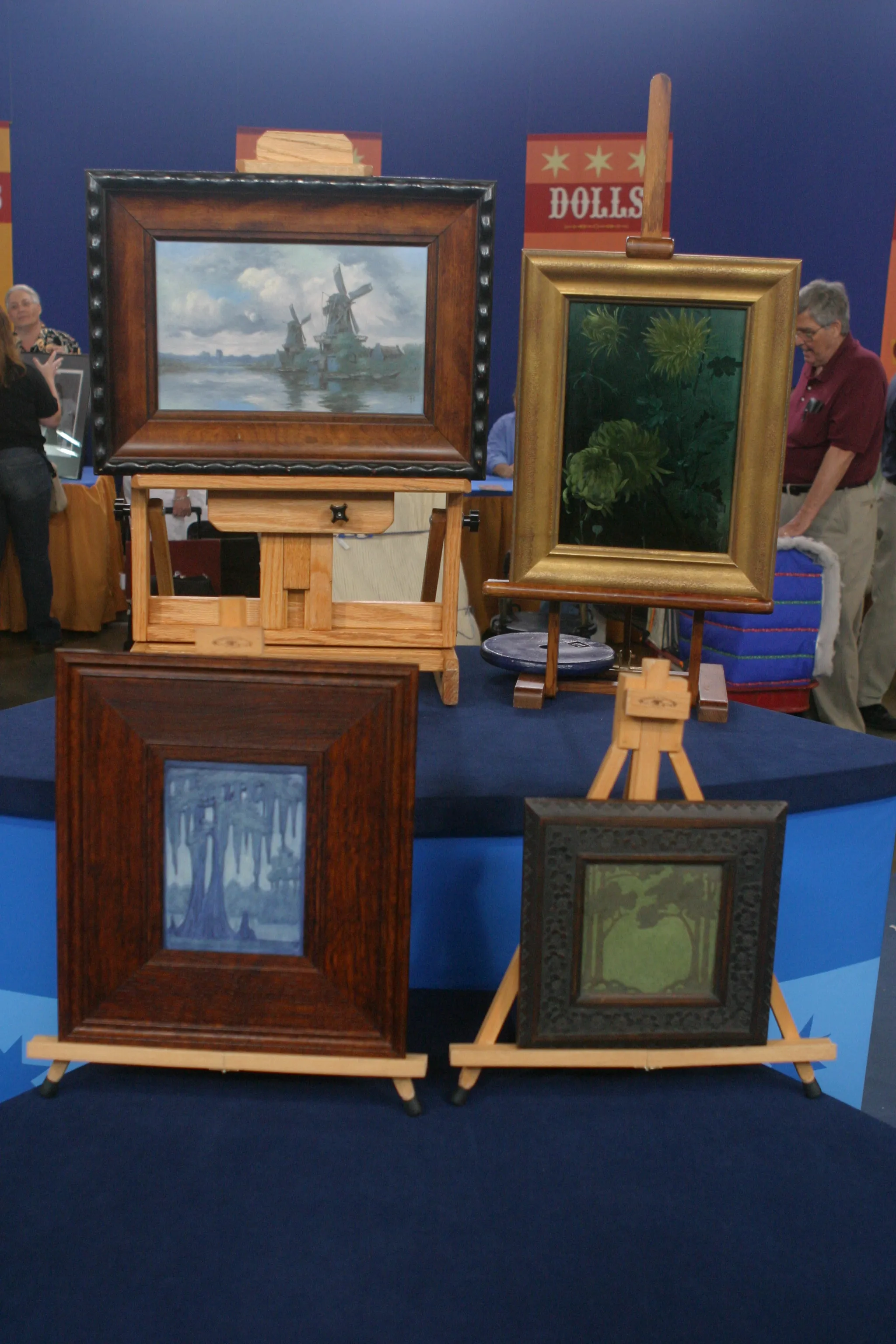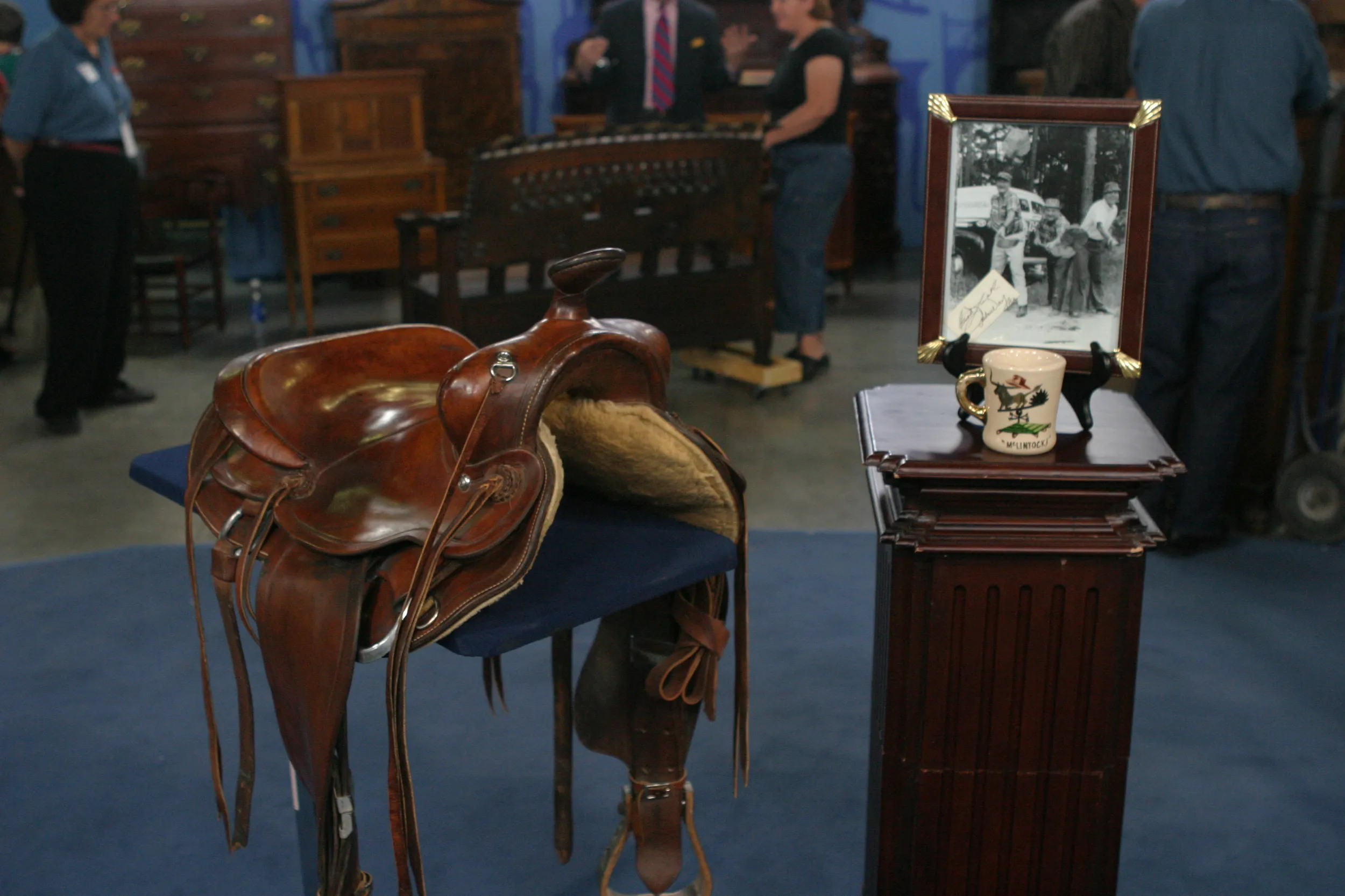GUEST: I got it at a flea market in a small town in Illinois, and the person who had a table full of military artwork--and I like both military and political artwork-- I asked him if he had any political artwork with him, and he said, "Well, I've got this poster," and he said, "I've had it for 20 years "and I debated on whether I should keep it or get rid of it." So he brought it out of the tube and laid it on the table. And I said, "Well, what do you want for it?" And he said, "How does $20 sound?" And I didn't quibble with him; I gladly gave him the $20.
APPRAISER: There's one thing about this piece that immediately jumps out at me, and that's its size. And I was thinking about it. This is only the second time I've ever had the luxury of sitting down while doing an appraisal. Usually the posters that come in are a lot larger, and I stand up. What do you know about the political background of the poster?
GUEST: It's McKinley and Roosevelt. McKinley was assassinated in 1901, and then Roosevelt became the president.
APPRAISER: It's the reelection poster.
GUEST: Okay.
APPRAISER: It's for McKinley's second term.
GUEST: Okay.
APPRAISER: And Roosevelt was picked from his governorship of New York state to be McKinley's running mate. And yes, it was one of those flukes of history where one year after the election, McKinley was assassinated and Roosevelt ascended to the presidency. But it's the little vignettes in this poster that really make such a profound impact, I think. It's fascinating to me to see how the political situation in the year 1900 is not that different from the political situation today. And the premise of the poster is that the administration has kept its promises. We also have all these wonderful little vignettes about what the country was like in 1896 compared to what the country is like in 1900. Here, we have the visualization of the Democratic state of affairs in 1896, where plows are stuck in fields, ships have holes in them, factories are closed. Then to 1900, where the Republican administration has gotten the trains and the ships running, the factories working, farmers are plowing their fields. Also, we have something that's startlingly similar to today in 2011, where there was a financial crisis in the late 1890s, which was then resolved by 1900. And then on the foreign policy front, we have what Cuba was like under the Spanish rule and how Americans in Cuba-- by the way, largely led by Theodore Roosevelt himself as a member of the Rough Riders in the Spanish-American War-- what the beautiful civilization of Cuba looked like after the American intervention. It's more than a poster, it's a story. And it's more than a story, it's a political story. So there's so much going on. I learned something new as I was conferring with my colleagues about this piece. This is what's referred to as a jugate, and a jugate is a political poster where both candidates are pictured. It's not just the president, it's not just the vice president.
GUEST: Okay.
APPRAISER: It's both candidates together. And as a jugate, a piece like this would be even more appealing to the political collector.
GUEST: Okay.
APPRAISER: Do you have any idea as to its value?
GUEST: Just an educated guess, I would think maybe $2,000, $2,500.
APPRAISER: You know, I think that's a good educated guess. I was able to find a couple of sources where it was sold in the past, and I have one auction in the year 2007, but this poster sold for $1,000.
GUEST: Okay.
APPRAISER: And another auction in 2010 where it sold for $1,600.
GUEST: Okay.
APPRAISER: So that gives us a general range of its value. But I have to tell you, I think those numbers are low, and I think this poster is exceptional enough that at a well-publicized auction, a fair estimate would be between $3,000 and $4,000.
GUEST: Okay.











